Table of Contents
What’s more important for you when choosing sports and leisurewear – the design or the material? I believe that there are still many people for whom the cut and pattern of the clothes is a priority and they don’t care so much about what the pieces are made of. However, if you want to feel comfortable during your favourite activities, you shouldn’t underestimate the choice of the right fabric. In today’s article, we will therefore focus on the materials most commonly used in sport and leisurewear. We’ll take a closer look at their properties and also discuss which fabrics are best for specific activities.
What are the most common fabrics, their properties and what are they made of?
The clothes you wear during various activities directly affect how you feel. And that can ultimately translate into your performance as well. If you were to run in a cotton t-shirt that is soaked in sweat and is cold, you would hardly feel comfortable. And it’s even worse if you’re playing sports in the winter. Likewise, you’ll have a harder time lifting your max in scratchy material that won’t allow you to move freely due to its improper fit.
So, let’s break down the properties of each material so you can choose the perfect activity for them. Having the right clothes will help you feel comfortable and get the most out of your workout.
And if you’re also interested in the topic of functional clothing, you shouldn’t miss our article Functional Clothing: Why It Makes Matters and How It Can Help You Improve Performance?
Acrylic
Acrylic is a material that is often referred to as the more affordable relative of wool, as they are quite similar in some properties. In yarn form, it is particularly popular with people who are starting out knitting but don’t want to spend money on wool. Acrylic only started to gradually gain popularity around the 1950s. It is a synthetic fabric that is made from a polymer called acrylonitrile. In order for it to form at all, certain reactions of fossil fuel-based chemicals must take place.
The polymerisation then produces a substance whose consistency is somewhere between a solid and a liquid. This solution is softened by means of thicker or thinner air nozzles. And after further processes comes the spinning into threads that are woven into the fabric. This creates the material from which the individual pieces of clothing are made. [3] [4]
What are the properties of acrylic?
Acrylic is generally one of the least breathable fabrics. Therefore, it is mainly used in clothing where you want it to be warm and retain heat. Acrylic fabric is also lightweight and water repellent. However, it often generates static electricity. This is especially frustrating for women when they have perfectly coiffed hair and decide to take off their acrylic sweatshirt. Neither will they be pleased by the fact that acrylic tends to wrinkle quickly. The material doesn’t wick away sweat very well, so it’s not ideal to use it as a base layer of clothing. The advantage of acrylic is that it doesn’t shrink when washed, so there’s no need to buy a larger size. [5]
What is made from acrylic?
In the textile industry, acrylic is mainly used to make coats, sweaters, hats and socks. However, it is also used in home textiles, for example in the production of carpets, blankets and bed linen.
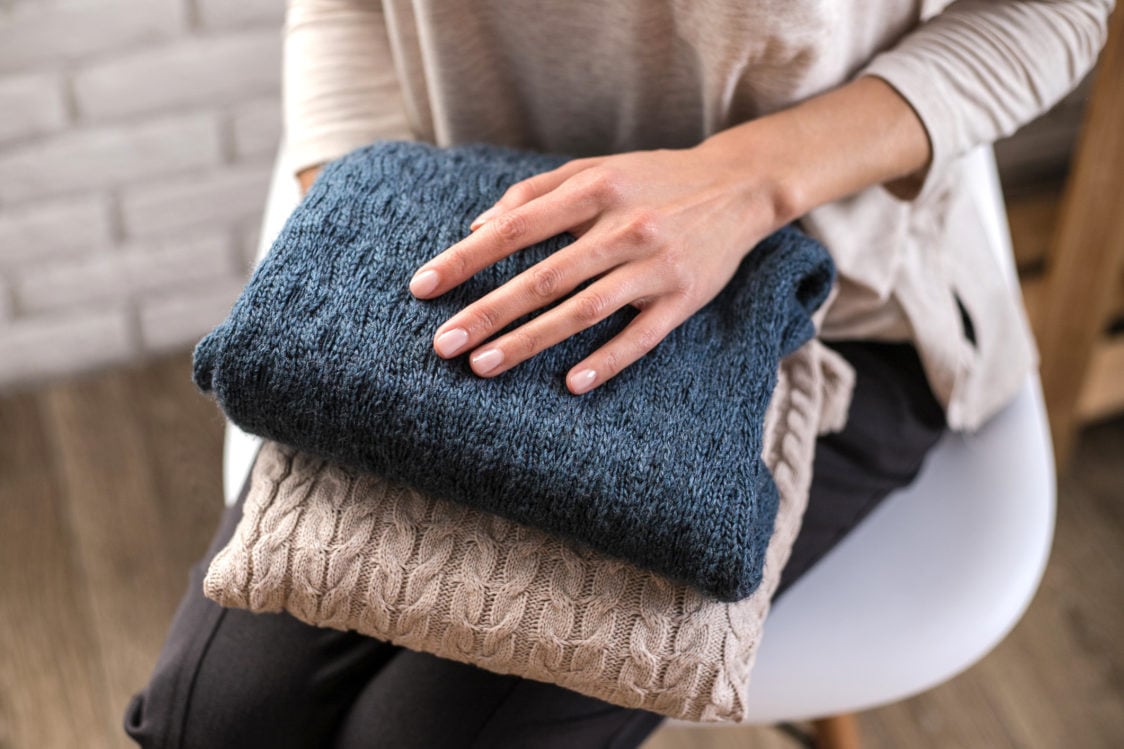
Bamboo fabric
Bamboo fabric is a highly versatile and sustainable material that is also used for clothing. The bamboo plant will certainly surprise you with its growth rate. It can grow up to one metre in one day. And the best part is that it continues to grow after harvesting without any further human intervention. Nor does it need fertilisers or pesticides to grow. Unlike plants that often deplete the soil and degrade its quality, bamboo does the opposite. It can thus act as a kind of soil enhancer.
Bamboo is considered one of the strongest materials. It has an even stronger structure than steel. This is also the reason why it is used in construction. More than a billion people still live in bamboo houses. Plus, it’s even good for the environment. It can absorb carbon dioxide and release 35% more oxygen into the atmosphere than other such plants. [6]
What are the properties of bamboo fabric?
Bamboo fabric is hypoallergenic, anti-static and also antibacterial. It does not irritate the skin and is suitable for people with sensitive skin. Moreover, it has perfect absorption properties and it can keep the body dry and comfortable. It is soft, which again contributes to its comfort. It can also regulate body temperature perfectly. It traps cooler air in summer and warmer air in winter. This makes it the ideal base layer for all weather. [7]
What is made from bamboo fabric?
Bamboo fabric is used in the textile industry to make underwear, socks, under garments, sweatshirts, jumpers and so on. Due to the properties of bamboo, it is not ideal to use it as an outer protective layer. Therefore, bamboo jackets are usually only lined with bamboo fabric.
Cotton
Cotton is a biodegradable natural material with a long history. It has been processed for hundreds to thousands of years. However, it was the great industrial revolution of the 18th century that kick-started large-scale production. One drawback may be that cotton cultivation usually requires huge amounts of water, pesticides and fertilisers. Even so, cotton is one of the materials most often found in our wardrobes today. [8] [9]
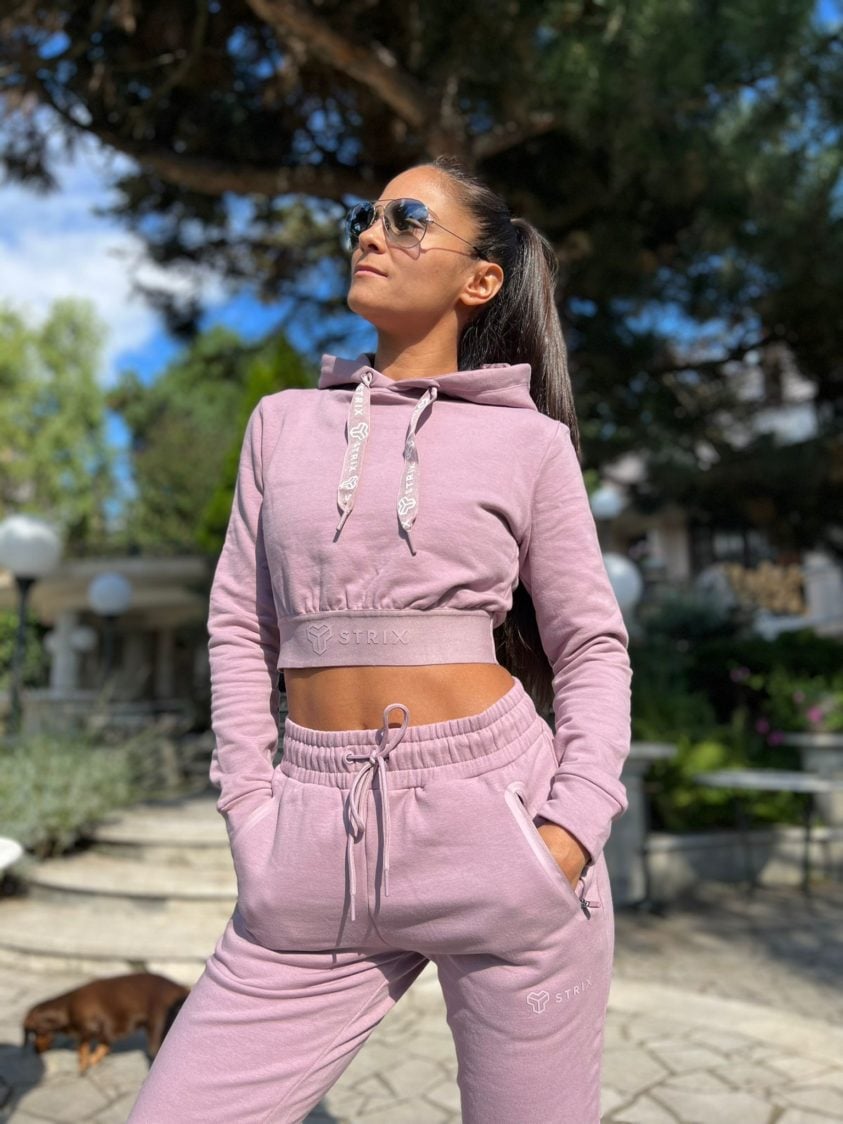
Cotton comes from a plant called the cotton plant, which needs at least 200 days to grow. To process it after harvesting, it needs what is known as cotton gin. However, it is not an alcoholic drink, as the name might suggest. It is a device that helps to remove seeds, husks and other unnecessary matter from the spun material.
The ginning process yields approximately 35-40kg of usable material from 100kg of harvested cotton. This is then further processed to produce clothing and other cotton products. [10]
What are the properties of cotton?
Its great advantage is its breathability and comfort. Compared to other natural fabrics such as linen and silk, it is usually much more affordable. It can usually withstand many washes even at higher temperatures and can withstand sunlight, in this regard it can be considered quite durable.
If you have cotton clothes at home that have not been chemically treated, you must take into account that the size of the clothes may shrink by about 10-15%. Therefore, sometimes it’s better to buy clothes a little bigger so that your smaller sibling doesn’t end up wearing your gorgeous cotton T-shirt.
What is made from cotton?
Cotton can be used to make virtually any piece of clothing – socks, underwear, tracksuits, leggings, shorts, T-shirts, sweatshirts, as well as scarves and hats. Less often, it is used to make pieces that require greater resistance to the elements. Thus, don’t expect 100% cotton to make a winter jacket, for example. It will more than likely only be the lining.
You might be interested in these products:
Elastane/spandex/lycra
Elastane, spandex and lycra are different names for the same elastic synthetic fabric. Lycra is its trade name, given to it by DuPont in 1958 when it introduced this fibre to the market. Since it is a synthetic fabric, production begins in a laboratory. First, a prepolymer is created, which then goes through chemical reactions, dilution, airflow nozzle softening, heating, twisting, and finally weaving to create the final fabric. The elastic fibres themselves are characterised by the fact that they can be stretched to several times their original length and then returned to their original size. As a result, you will virtually never come across a piece of clothing that is only made of this elastic fabric. It is mainly used as an additive to give the item its elasticity. [2] [11] [12]
What are the properties of elastane/spandex/lycra?
The most unique characteristic of elastane is its elasticity. This is also the main reason why it is used as an additive in clothing. It makes the individual pieces stretch better, doesn’t pinch and adapts to the body.
What is made of elastane/spandex/lycra?
You’re not likely to come across clothes in the shop that are just spandex. It’s used as an additive. It’s added to just about any type of clothing. You’ll find it in underwear, socks, leggings, track pants, outer garments, jackets and hats. It’s even added to denim to make it more flexible and fit the body better.
Nylon
Nylon is a type of polyamide that was discovered in the 1930s by a DuPont scientist. Originally, this new innovation was to be called “klis”, or silk backwards. The name was meant to refer to the fact that it was meant to be an alternative to silk. Among the suggestions was the name “Duparooh”, which was to be a shortened version of the phrase “DuPont Pulls A Rabbit Out Of a Hat!” Nylon is produced and processed in several different ways. These processes result in different fine or coarse fabrics. Its primary properties can also change. [1] [13]
What are the properties of nylon?
Nylon is generally smooth and strong. However, it does not withstand harsh sunlight and high temperatures very well. So when ironing, you need to lower the degree. The advantage of nylon is that it dries quickly, which makes it a fine partner for sports. Ideally, the fabric contains an admixture of other fabrics besides nylon to compensate for any imperfections. As with acrylic, you probably won’t be happy with the presence of static electricity, which can not only ruin your hairstyle but also make clothes stick awkwardly to your body. [1] [14]
What is made from nylon?
In addition to tights, you can often find nylon in sportswear such as leggings, tops, bras, shorts, T-shirts, jackets and so on. It works well with elastane. Together, they create well-fitting pieces that keep you dry and adapt perfectly to your figure.
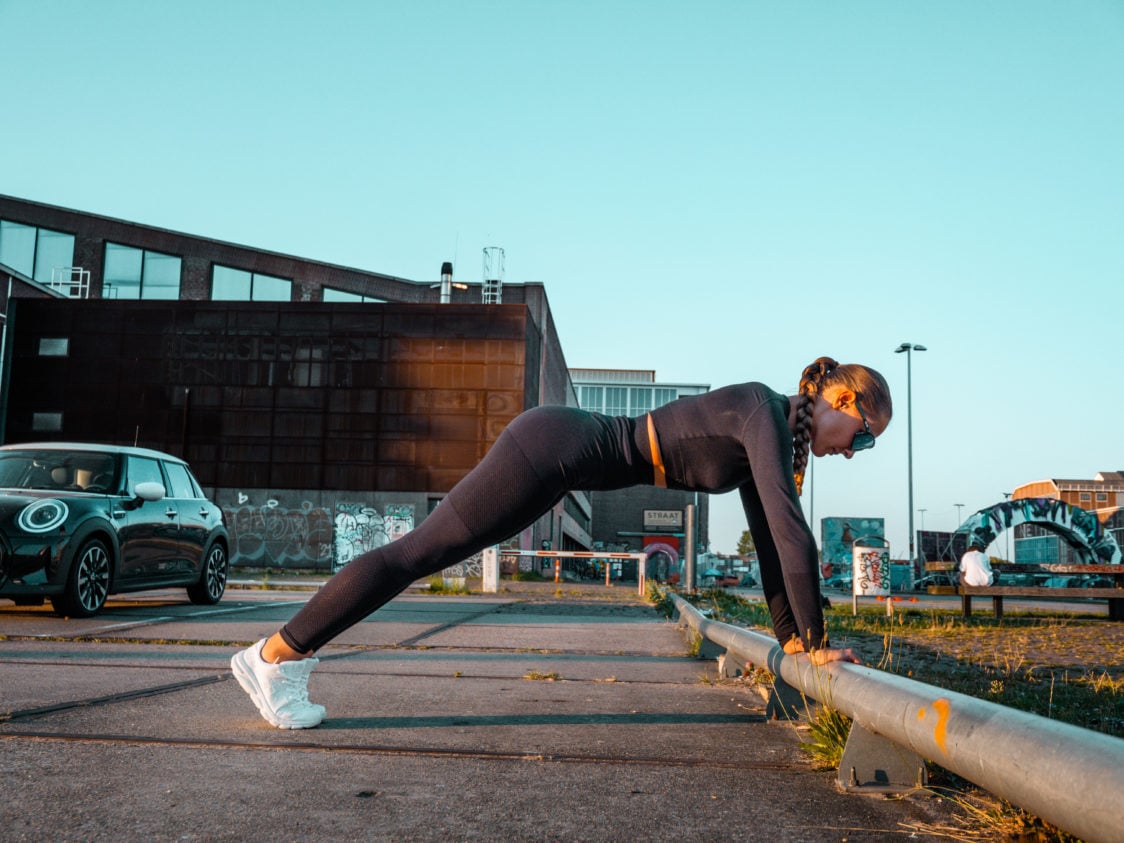
Polyamide
Many people still think that nylon and polyamide are the same material. But it’s not that simple. Although they share many properties, they are different. The main difference between nylon and polyamide is the origin. While nylon is always synthetic, polyamide can be both natural and synthetic. Furthermore, nylon is just one particular type of polyamide.
What are the properties of polyamide?
Compared to polyester, for example, polyamide is less breathable and less able to maintain colour fastness. However, its durability, moisture wicking and overall comfort are great advantages. In addition, it also stands out for its elasticity.
What is made from polyamide?
Polyamide is an ideal material for the production of sportswear. It is a common component of socks, bras, underwear, leggings, T-shirts, sweatshirts and other pieces of clothing that you would expect to be both comfortable and wick away sweat.
Polyester
Polyester is a synthetic fibre that is made from a combination of coal, air, water and oil. It is a polymer, which essentially makes it an unpopular plastic. It was introduced to society around the middle of the 20th century as a fabric from which clothing could be made quickly and cheaply. Since its arrival on the market, however, polyester has undergone many changes that have made it an increasingly comfortable, pleasant and arguably more popular material. [15]

What are the properties of polyester?
One of the biggest advantages of polyester fibres is their durability. They can withstand many washes and still retain their appearance and properties. Those of you who have been wearing your favourite polyester shirt to sport for years and it still looks like new will attest to that. Its other benefit is that it doesn’t wrinkle. Therefore, you can safely scrunch it up in your sports bag and head out for a workout. Even after pulling it out, it will still look like a freshly ironed shirt. It’s also perfect for wicking sweat, moisture and its drying speed. As a result, it will keep you dry even during intense workouts.
The disadvantage, however, is that static electricity can build up. Lesser quality polyester can also be excessively rough and irritate the skin. Compared to cotton, for example, it’s less breathable, so you’ll probably sweat a tad more in it. But it will take care of the moisture well in return. You’ll appreciate this feature in colder weather, for example, when polyester acts as a great insulator that retains heat despite its lightness. As it is a synthetic material, it can promote the growth and retention of odour-causing bacteria. It is therefore ideal to wash polyester clothing as soon as possible after training. [1]
What is made from polyester?
Virtually any piece of clothing can be made from polyester. The classics are sporty pieces with great functional properties. Thus, polyester can be used for socks, leggings, shorts, T-shirts and sweatshirts. Jackets too. You’ll also often see polyester in the form of a warm fleece that retains heat. But it can also be mesh, which, for example, increases breathability in sportswear.
Viscose (rayon)
Viscose is often referred to as rayon because of its shiny and smooth appearance. The main component is wood pulp, so some people classify it as a natural fabric. However, it is not that simple, in order to dress up this wood pulp, it needs to go through many lengthy processes. That is why it is often considered a semi-synthetic fabric. The manufacturing process of viscose is also linked to its name. At a certain stage, the original wood pulp becomes a honey-like substance that is viscous, i.e. sticky and thick. [16]
What are the properties of viscose?
The great advantage of viscose is its moisture absorption. It wicks sweat away from the skin and keeps the body dry. At the same time, it also has a cooling effect, which is optimal especially during summer sports. In addition, it dries quickly. If you have sensitive skin, you will appreciate that viscose is more gentle than conventional synthetic fabrics. In addition, it is very light, breathable and does not stick to the body. This makes it ideal for summer leisurewear. However, it is not suitable as an insulating layer for sports in colder weather, for example, when you need your clothes to retain body heat. Viscose is also not as durable as polyester and therefore requires more gentle handling. [17-19]
What is made from viscose?
As viscose is comfortable and breathable, it is often used as a fabric for lining. It is breathable and wicks sweat away, so it can be a great staple in comfortable sportswear for lower intensity activities.
Merino wool
Merino wool is included in the classification of other wool. However, this particular type can only be obtained from merino sheep. One sheep can produce up to 5,000 km of this popular fibre in just one year. And I’ll spare you one more interesting fact. Did you know that merino sheep don’t have to turn around to see behind them? They have a 360-degree field of vision. [1]
What are the properties of merino wool?
Merino wool is known for its warmth and thermal insulation. In fact, the fibres have many pockets in them that can hold warm air as needed. This makes it a great insulator and a perfect base layer in winter, for instance. In summer, it helps to keep you cool and effectively wicks away sweat.
In addition, a lubricant called lanolin penetrates the merino wool through the sebaceous glands of the sheep, which makes the resulting material waterproof. This ensures that the sheep do not get wet. It can also trap moisture (absorbing up to 30% of its weight) and wick it away from the skin. Lanolin also has antibacterial properties. This is why it is used in underwear. However, it is also suitable for longer treks when you don’t have the opportunity to wash clothes every day and want to avoid unpleasant odours. [20]
The material is lightweight and soft, ensuring maximum comfort during all activities.
What is made from merino wool?
Merino wool is often used to make the base thermal layer of cold-weather clothing. But it is also a great material for functional sportswear, as it cools and wicks away sweat. And if you’re looking for a sweatshirt that will keep you reliably warm, then merino wool is also a hit. Try to choose clothing that has a higher proportion of merino. Due to its higher price, it is often combined with cheaper materials. However, this then changes the characteristics of the final product.

What else can sports and leisurewear be made of?
Although we have introduced some of the most commonly used materials, they are certainly not the only ones used in sports and leisurewear. Especially for casual pieces that aren’t designed for sports, you may also see linen, satin, silk, denim and other materials.
In the same way, you will very often come across clothes that are made of a mixture of different materials. This can make the clothes lower in price or have better quality. For example, a combination of polyester and cotton is typical. This creates a combination that is more breathable than polyester alone, but also wicks away sweat better than cotton alone.
The combination of various materials with a proportion of elastane, which gives the clothes elasticity, is also a classic. This creates a garment that adapts better to your body. Depending on what you expect from the clothes, it is then a good idea to choose a specific material combination. But to make things easier, we’ll summarise the key features that will help you choose the optimum clothing for your specific activities.
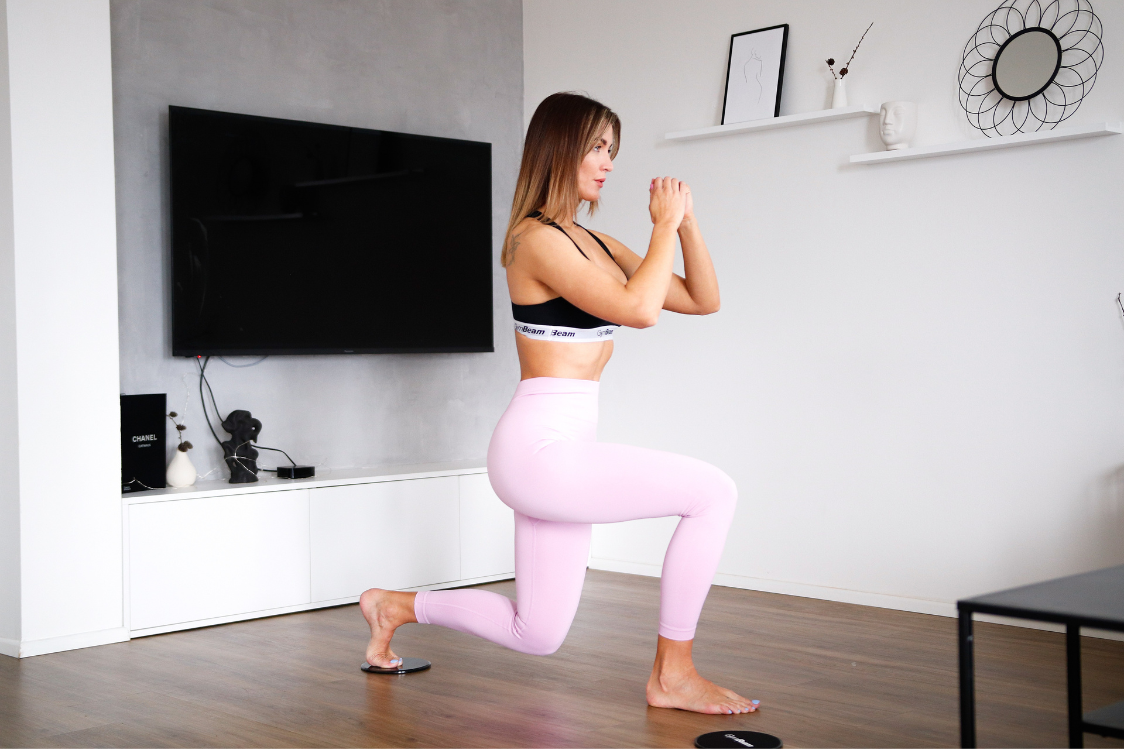
How do you choose appropriate materials for your activities?
The right material for the occasion and activity is crucial to your comfort, overall sensation, and performance. Sometimes it can even make the difference between finishing your workout early just so you can get that heavy sweaty shirt off. Let’s review the key properties of each material together. And of course, we’ll give you some recommendations on which activities they’re best suited for.
Which materials wick away sweat the best?
Among the materials that wick sweat best, we would definitely include synthetic fabrics such as polyester, polyamide or nylon. These fabrics are also more affordable. An even better choice is bamboo fibre or merino wool. These fabrics are more breathable and comfortable on the body compared to synthetics, which is ideal for people with sensitive skin. However, the fact that they are usually more expensive can be a disadvantage.
All of these materials are ideal for sports of varying intensity. You can wear them for strength training, running, cycling, team sports, HIIT and any other activity.
Which fabrics are the most comfortable?
We consider the most comfortable materials to be those that are comfortable on the skin, are not charged with static electricity, do not stick to the skin and are both airy and breathable. Natural fibres such as bamboo fabric, cotton, merino wool or semi-synthetic viscose meet all these criteria.
All of these materials are ideal for moderate intensity activities such as yoga, pilates or golf. It can also help you get through a busy day at school or work just as nicely.
Which fabrics are the most breathable?
The most breathable fabric is generally cotton, which is also very affordable. However, merino wool or bamboo fabric should not be overlooked. All of these materials are thus ideal for all-day wear when you want to minimise sweating and require maximum comfort. They can also handle moderate-intensity activities such as yoga or pilates.
For synthetic materials, which are generally less breathable, it is ideal to choose garments with at least a partial mesh panel. This mesh section increases breathability, thus maximising comfort during your activities.
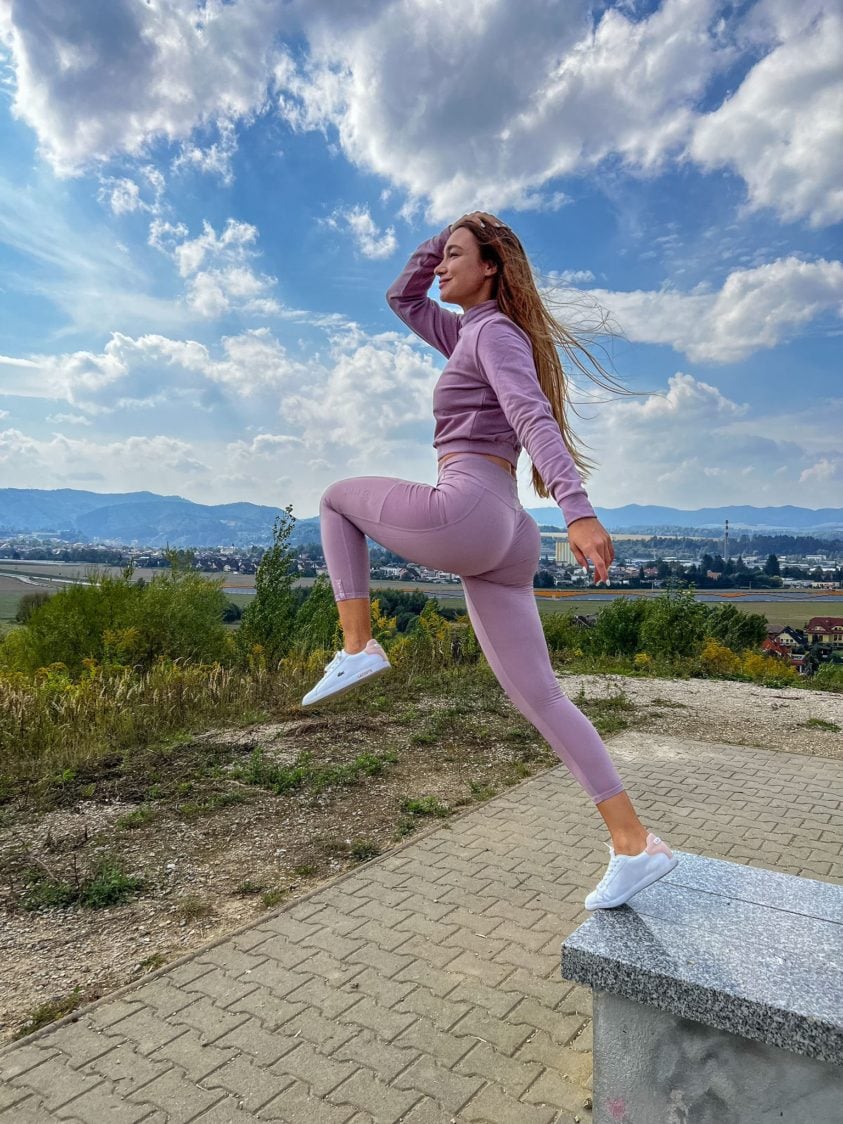
Which fabrics dry the quickest?
For drying speed, synthetic materials such as polyester, nylon or polyamide are among the best available choices. The big advantage is that sweat stains don’t stay on them for long. And if you do not want them to be visible at all, white or black is the ideal choice.
All these rapid-drying fabrics are therefore ideal for more or less intense sports activities. They are perfect for the gym, running, rollerblading, cycling, squash or team sports.
Which fabrics is the most durable?
The most durable fabrics are again synthetic fabrics such as polyester, polyamide or nylon. Since these fabrics are often used for sportswear, which is washed more often, durability is an added benefit.
These more durable fabrics are suitable for all sporting activities such as strength training, HIIT or endurance sports. Crossfitters will also be pleased with clothing made of durable fabric, as they won’t be afraid of ruining it during their next set of burpees.
Which material is the warmest?
Merino wool is the king of warm materials, as its air pockets maintain warmth and keep your body warm. Another natural fabric that has similar properties is bamboo fabric. Both of these materials also reliably wick away sweat. This combination makes them ideal for cold weather activities. You can wear them as a base layer for skiing, cross-country skiing, skating or going out for a walk.
Acrylic is also among the warmer and usually more affordable materials. However, it doesn’t wick sweat very well, so it’s not ideal to wear as a base layer for sport. However, if you wear, for example, underwear and a merino wool T-shirt under your jacket in cold weather, and then wear an acrylic sweater over it, you have a unique thermal combination that the cold just doesn’t stand a chance against. Layering correctly is simply the key to success.
Which materials eliminate odour?
If you’re looking for clothing that eliminates the growth of odour-causing bacteria, natural fabrics such as merino wool or bamboo are ideal. These are a great choice, for example, for multi-day hikes or bike rides when you don’t quite have the option of washing your clothes. Then just let the garments air out, and the next day you’ll feel like you’re wearing a clean and fresh T-shirt.
How to care for your clothes?
Taking proper care of your clothes can make a big difference to the life of your favourite pieces, so don’t underestimate the importance of it. The key to success is to follow the recommendations on the label of each garment.
Read the labels on your clothes. There you will typically learn:
- how many degrees to wash clothes at
- whether it is suitable for the washing machine or whether it needs to be hand washed
- whether you can bleach your garments
- if the garment can be ironed, and if so, at what temperature
- if the garment can go in the dryer
- whether it can go to the dry cleaners
It is equally important to choose the right detergents that are designed for your specific type of clothes. For example, sportswear should not come into contact with common fabric softeners and detergents that are not designed for it. This could, for example, damage its texture and ruin its functionality. This could also happen if you run a hot iron over functional clothes.
It probably goes without saying that you need to sort your laundry by colour. I suppose there are more people out there who have ever washed a white shirt with a coloured shirt and then wondered why the white shirt was suddenly pink.
Don’t forget to store your clothes properly either. Keep your wardrobe dry. Moisture could attract moths, which may be difficult to get rid of.
Quality clothes are not always the cheapest option. Once you’ve decided to buy them, treat them in a way that makes them last as long as possible.
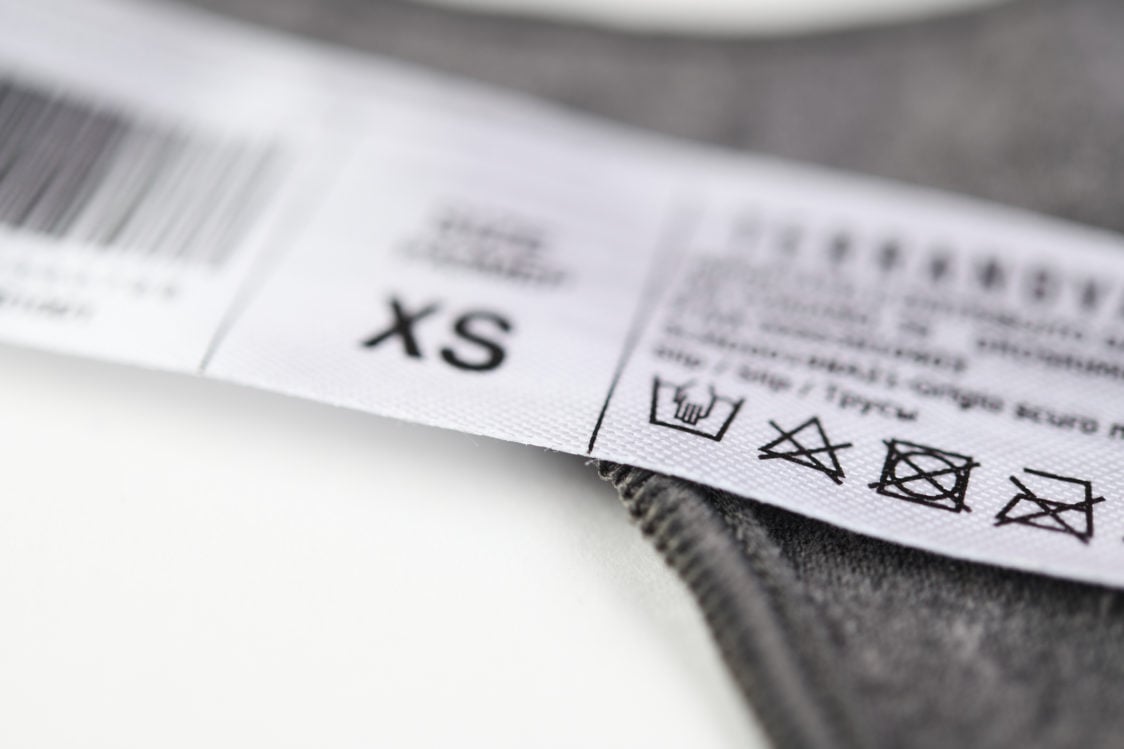
What should you remember?
Every athlete and active person certainly expects more from their clothing than just a nice design. If you are concerned about being comfortable and staying dry or warm, you need to focus more on the materials as well. When you reach for the most suitable one for the sport, you will see that you will also be able to perform better and somehow enjoy all your activities more.
Do you have someone among your friends who only looks at the design and does not care about the material of the clothes? Share our article with them to find out how clothing can help them perform better and improve their comfort during sports and other activities.
[1] Polyester, nylon, wool and more: The fabrics to look for in your workout clothes – https://www.cnet.com/health/fitness/how-to-find-the-best-workout-clothes/
[2] What are the Types of Material Used to Make Sportswear? – https://lsponline.ca/2019/01/08/what-are-the-types-of-material-used-to-make-sportswear/
[3] The Truth About Synthetic Acrylic Fiber Fabrics – https://www.panaprium.com/blogs/i/acrylic-fiber
[4] What is Acrylic Fabric: Properties, How its Made and Where – https://sewport.com/fabrics-directory/acrylic-fabric
[5] Natural Clothing – https://www.naturalclothing.com/what-is-acrylic-fabric/
[6] 15 fun facts about bamboo – https://www.miik.ca/blogs/news/85496708-15-fun-facts-about-bamboo
[7] 10 Facts About Bamboo – https://ettitude.com/impact/ten-facts-about-bamboo-fabric
[8] 16 Facts About Cotton That You Don’t Know – https://barnhardtcotton.net/blog/16-facts-about-cotton-that-you-dont-know/
[9] Shanthi Radhakrishnan – Sustainable cotton production – https://www.sciencedirect.com/science/article/pii/B9780081020418000020
[10] 12 Interesting Facts About Cotton – https://www.agiboo.com/12-interesting-facts-about-cotton/
[11] Lycra vs Spandex vs Elastane: What is the Difference? – https://silverbobbin.com/lycra-vs-spandex-vs-elastane/
[12] Elastane VS Spandex: What’s the Difference? – https://theecohub.com/elastane-vs-spandex-whats-the-difference/
[13] 11 Things You Might Not Know About Nylon – https://www.phillymag.com/news/2017/02/16/nylon-dupont-facts/
[14] Nylon – https://www.britannica.com/science/nylon
[15] 10 Things You Should Know About Polyester – https://carogomez.com/blogs/news/10-things-you-should-know-about-polyester
[16] WHAT IS VISCOSE? 7 FACTS YOU OUGHT TO KNOW – https://www.yolke.co.uk/pages/what-is-viscose-facts-you-ought-know
[17] 7 things You Need to Know about Viscose – https://www.ispo.com/en/trends/7-things-you-need-know-about-viscose
[18] Fabric Guide: What Is Viscose? Understanding Viscose Fabric and How Viscose Is Made – https://www.masterclass.com/articles/fabric-guide-what-is-viscose-understanding-viscose-fabric-and-how-viscose-is-made
[19] What Is Viscose? 6 Facts About This Misunderstood Fabric – https://www.contrado.co.uk/blog/what-is-viscose/
[20] Fun Facts About Merino Wool (and their Sheep) – https://wildlygoods.com/pages/fun-facts-about-merino-wool-and-their-sheep

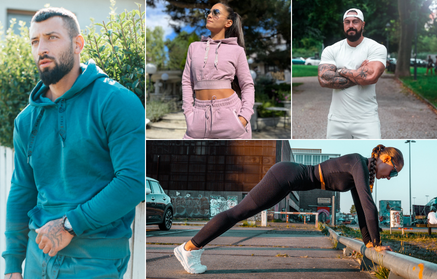
Add a comment